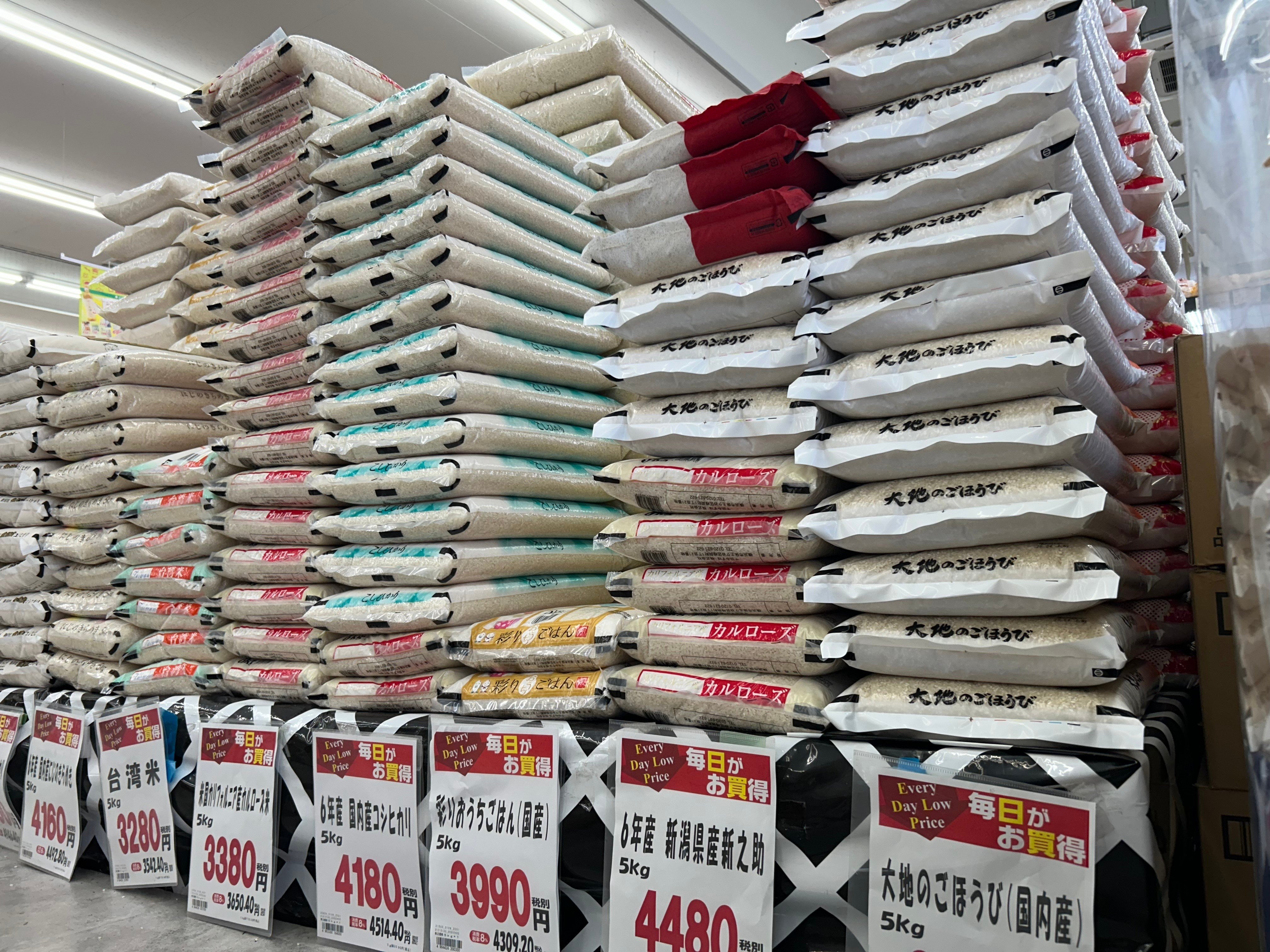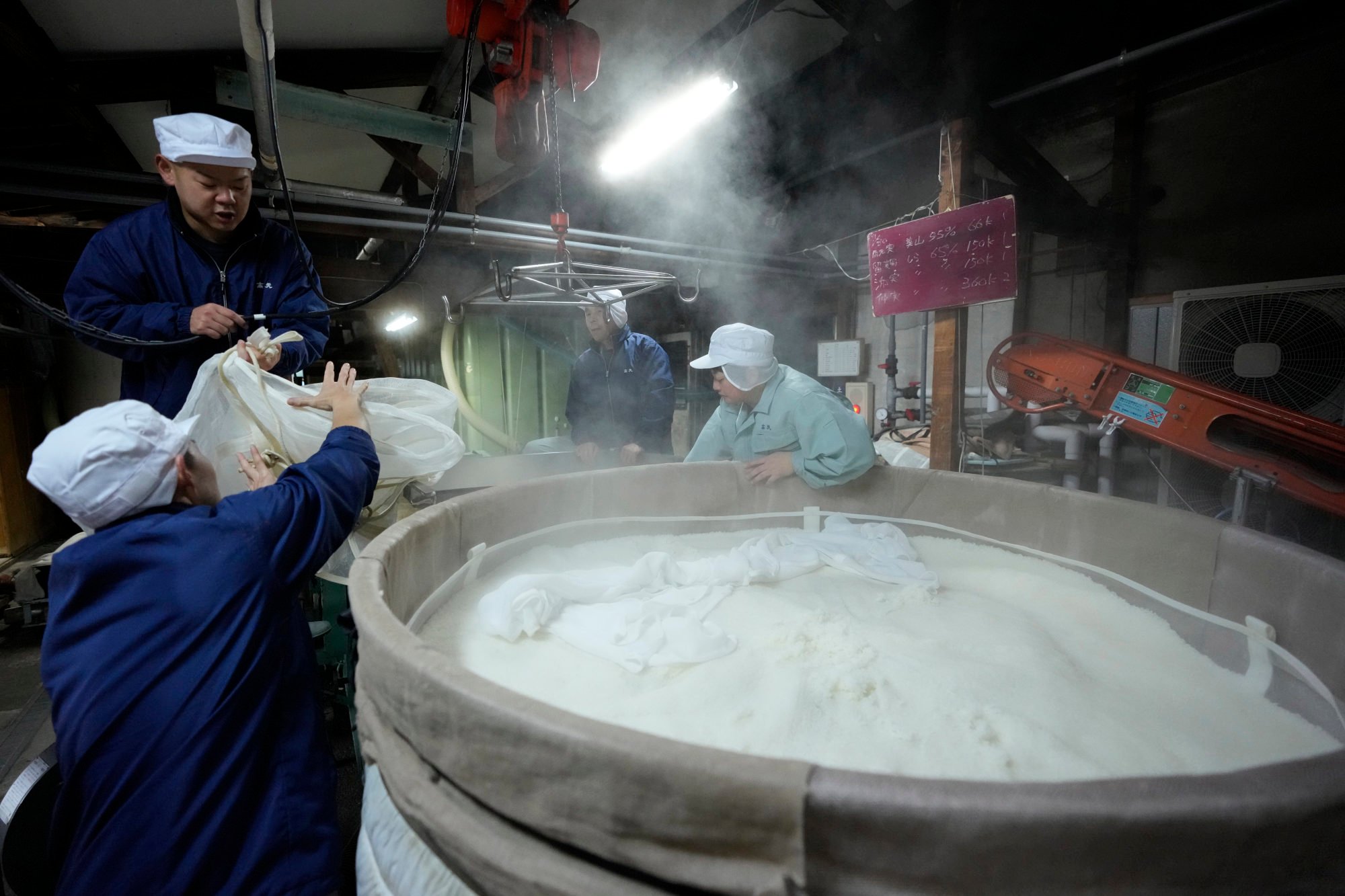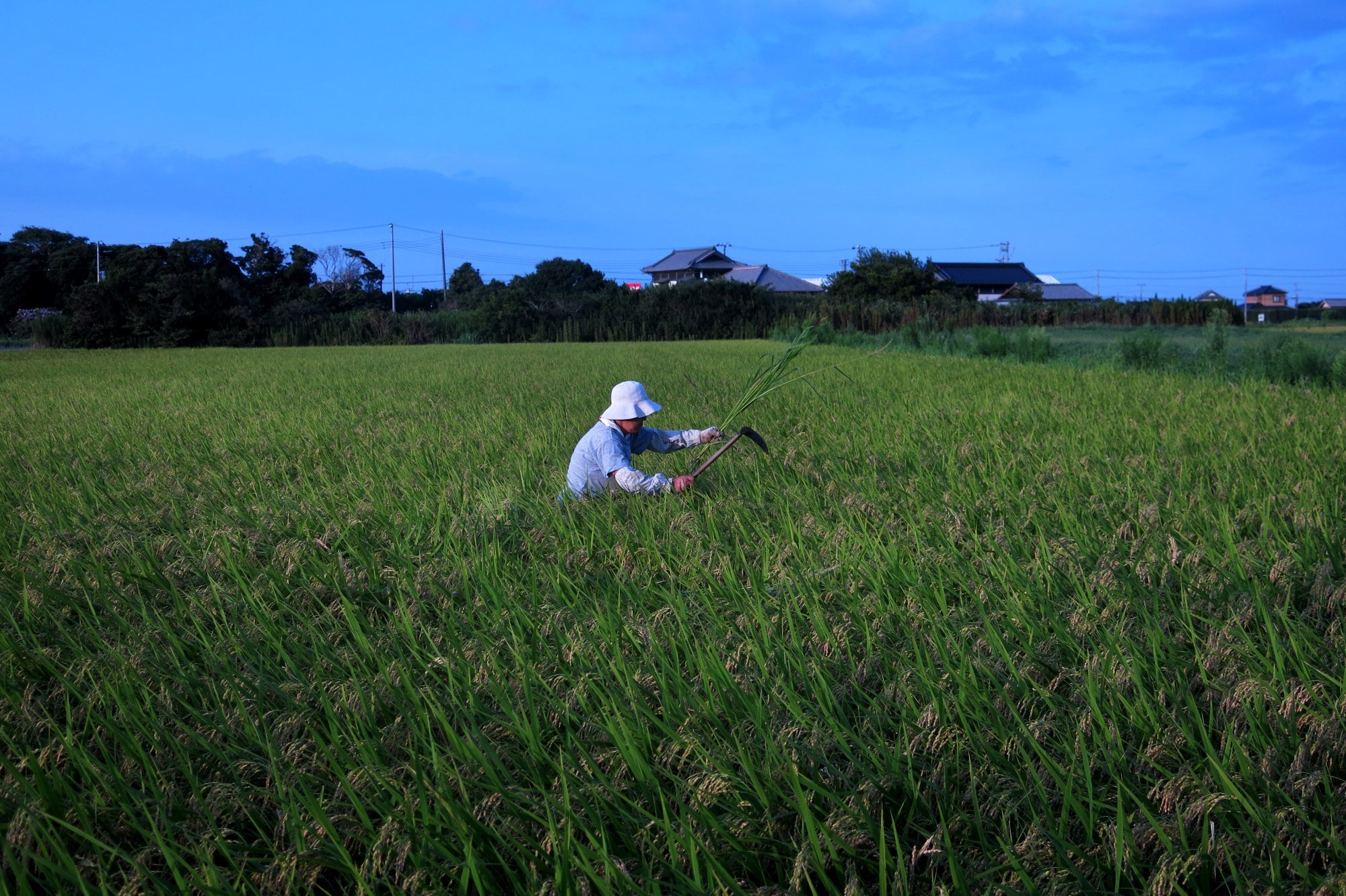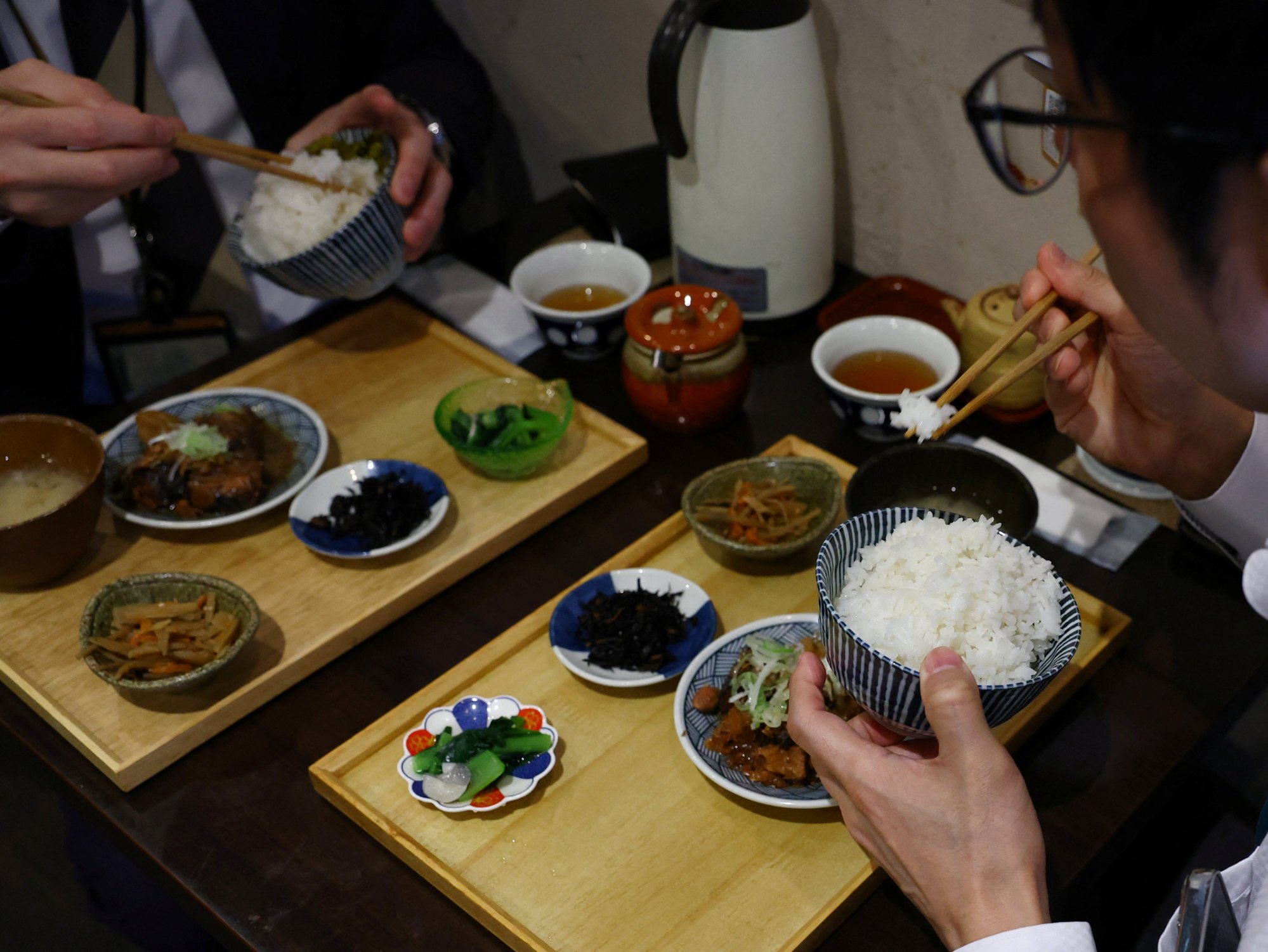Japan’s appetite for rice set to keep prices high as farm politics persist
Rice prices continue to surge in Japan due to a combination of factors, ranging from inbound tourism and hoarding to poor distribution

Japan’s efforts to curb soaring rice prices by releasing stockpiles and easing import restrictions have had limited effect, with analysts warning the country’s long-standing agricultural policies and supply constraints could keep prices elevated for years.
Supermarket prices for rice remained stubbornly high at 4,214 yen (US$28.50) per five kilograms in the week to May 4 despite the first decline in 18 weeks after a record peak the previous week, and they were more than double the price from a year earlier, according to data from the Ministry of Agriculture, Forestry and Fisheries.
The persistent price surge, which began in the summer of 2024, has rattled the food sector. Convenience stores have raised prices on rice balls and bento boxes, while beef bowl chains Matsuya and Yoshinoya have shifted to imported or blended rice to contain costs.
Several factors are fuelling the spike, according to Ogawa Masayuki, an assistant professor and an agricultural economist at Utsunomiya University. On the demand side, record inbound tourism and heightened hoarding due to fears of a major earthquake along the Nankai Trough have led to a price jump.
“On the supply side, the hot weather [in 2023] caused a significant drop in rice quality,” Ogawa told This Week in Asia.
The record-breaking summer heat of that year severely affected grain quality and rice yields.

Consequently, the amount of rice typically collected for making Japanese staples such as shochu, miso and rice crackers has fallen. This has led some manufacturers to use rice intended for direct consumption for processed products, further straining overall supply, Ogawa said.
Japan’s decades-old gentan policy has also played a significant role in limiting domestic rice production capacity, said Seohee Ashley Park, a postdoctoral research fellow at Tohoku University.
Originally introduced in the 1970s to reduce surplus rice production and protect farmers’ income, the gentan system provided subsidies to farmers who reduced the amount of land they cultivated for rice and penalised those who did not comply with quotas.
While the system was officially abolished in 2018, the practice continues today, with the government working with agricultural groups to adjust production volumes and maintain artificially higher prices.
Over the decades, the gentan policy has had the unintended consequence of curtailing Japan’s ability to respond effectively to sudden supply shocks, contributing to the current scarcity, according to Park.
Despite government expectations that the market would stabilise late last year with its new harvest, rice prices continued to soar, driven by forecasts of a persistent rice shortage into 2025 and authorities’ initial reluctance to release stockpiles.
As a result, the government’s pivot to auction off its reserves earlier this year failed to bring prices down.

“Some distributors have been holding on to larger amounts of rice than usual in anticipation of higher rice prices in the future,” Ogawa said, noting that they would have bought the rice at elevated costs last autumn.
“Thus, even if the stockpiled rice is distributed [by the government] at a lower price, the price will not be lowered if it is sold mixed with the already procured higher-priced rice,” he added.
Since March, Japan has released more than 300,000 tons of rice through three auctions.
This marked the first time Japan has tapped its rice reserves due to supply constraints rather than a natural disaster since their creation in 1995. The government has also pledged to release additional stockpiled rice every month until July.
But only a small portion of the auctioned rice has reached retailers, due to factors such as delays in negotiations and deliveries.
The National Federation of Agricultural Cooperative Associations, also known as Zen-Noh, which secures most of the auctioned rice, typically ships first to wholesalers, who then distributes it to mass retailers like supermarkets.
“This process delays market entry,” Park said. “For example, reserves released in March took weeks to reach stores, which means it failed to offset immediate shortages.”
As of Thursday, Zen-Noh had only shipped 32 per cent of the 199,270 tons of rice it bought in the first two March auctions.
It had been shipping 2,000 to 3,000 tons daily, the federation said on Friday, noting that wholesalers had requested for around 70 per cent of its bought rice to be delivered by July.
Zen-Noh pledged earlier this month to accelerate its shipping schedule in response to a call from the agriculture ministry to expand the rice supply.
Beyond releasing reserves, the Japanese government is also exploring increasing rice imports to stabilise supply.
The country imported rice from South Korea in March for the first time in over two decades, and is also considering expanding its rice imports from the US.
Japan imports around 770,000 tons of rice tariff-free annually under a World Trade Organization “minimum access” agreement. A tariff of 341 yen per kilogram is imposed on any rice exceeding this quota. The US supplied about 45 per cent of these tariff-free grains in the last financial year.
But the politicised nature of rice in Japan, where farmers form a traditional support base for the ruling Liberal Democratic Party, has made proposals to increase US rice imports controversial, especially ahead of the Upper House elections this summer.

Sato Yoichiro, professor of international relations at Ritsumeikan Asia-Pacific University, expects increased US rice imports to be included in Japan’s ongoing tariff negotiations with the Trump administration, but with Tokyo insisting the tariff-free quota as the “absolute ceiling”.
“Japan will do its best to keep the import of rice within the minimum access quota by shifting the source of import from other countries to the US,” said Sato, noting that the imported rice was mainly used for processing, thus minimising the impact on domestic farmers producing rice for direct consumption.
Sato predicts rice prices in Japan are likely to remain high, while prices for processed rice products like crackers might also rise, as the volume of US rice imports may not be able to increase fast enough to fill the minimum access quota even if trade negotiations were to proceed smoothly.
Ogawa also forecasts continued high rice prices unless the government implements drastic policies, noting that competition among traders for the 2025 harvest has already begun.
“This is the first time this has happened. Many traders are already negotiating with rice farmers for higher prices,” he said.
With the price surge leading to increased consumption of cheaper blended rice varieties, Ogawa said a wide price range for different rice products, possibly between 3,800 yen and 6,500 yen per five kilograms of rice, could persist until 2027.